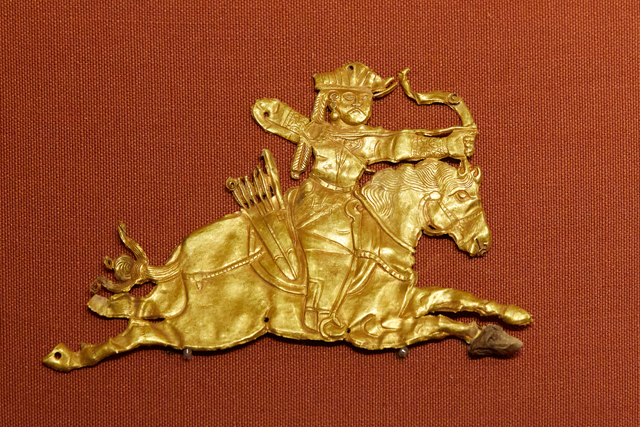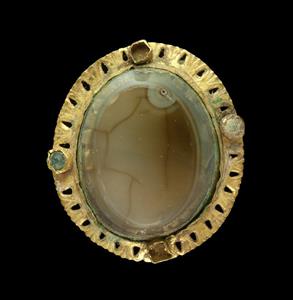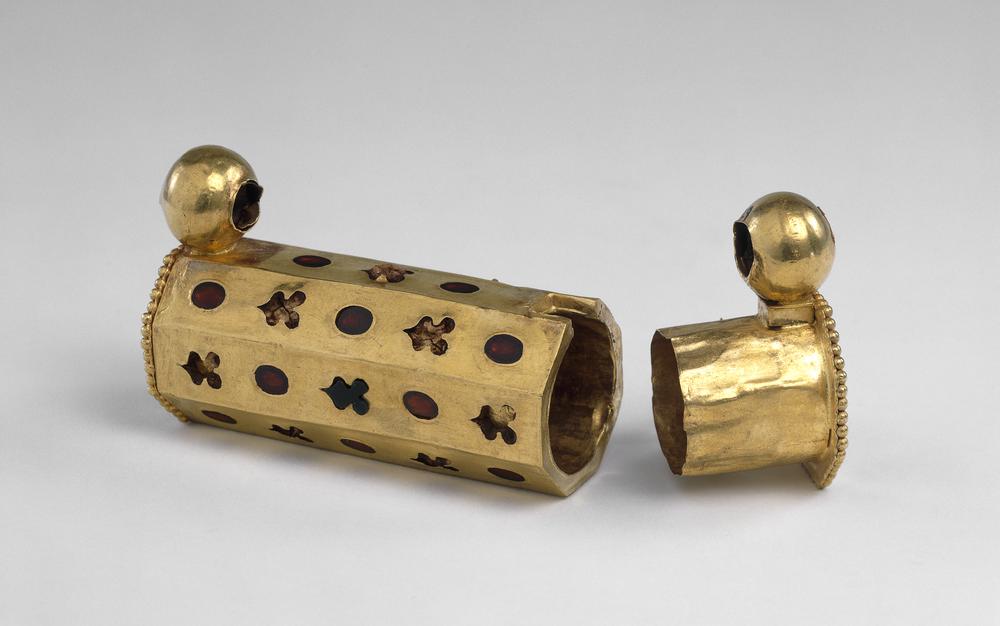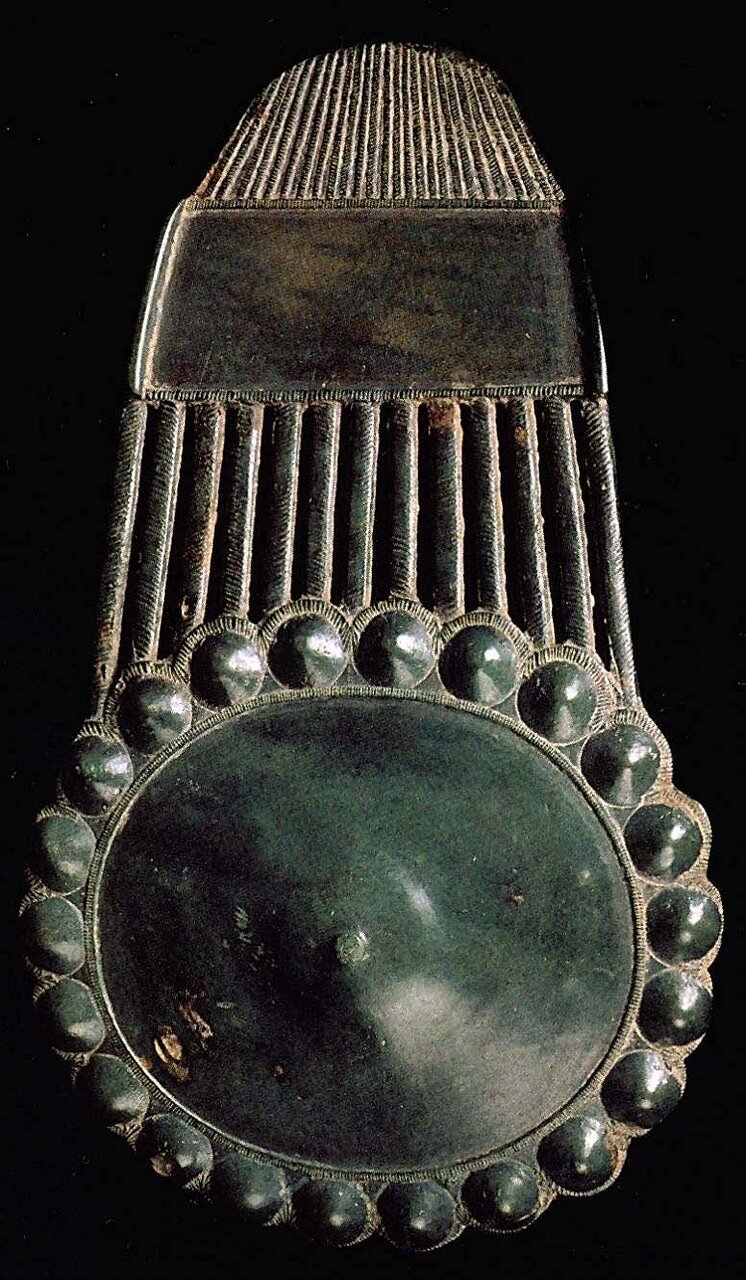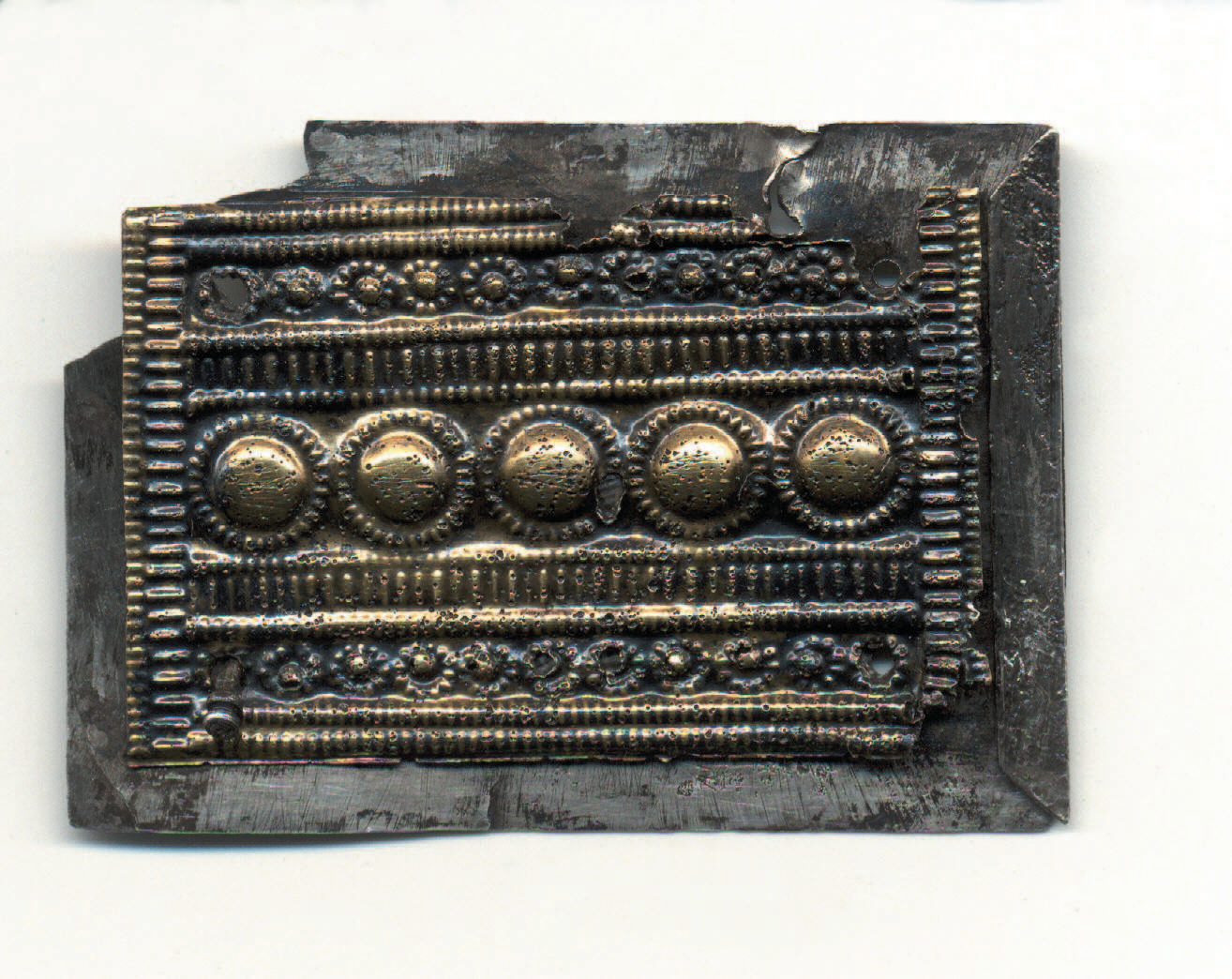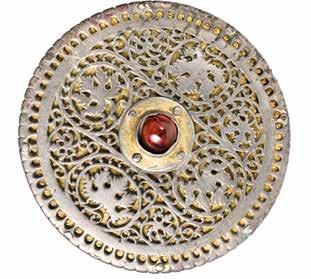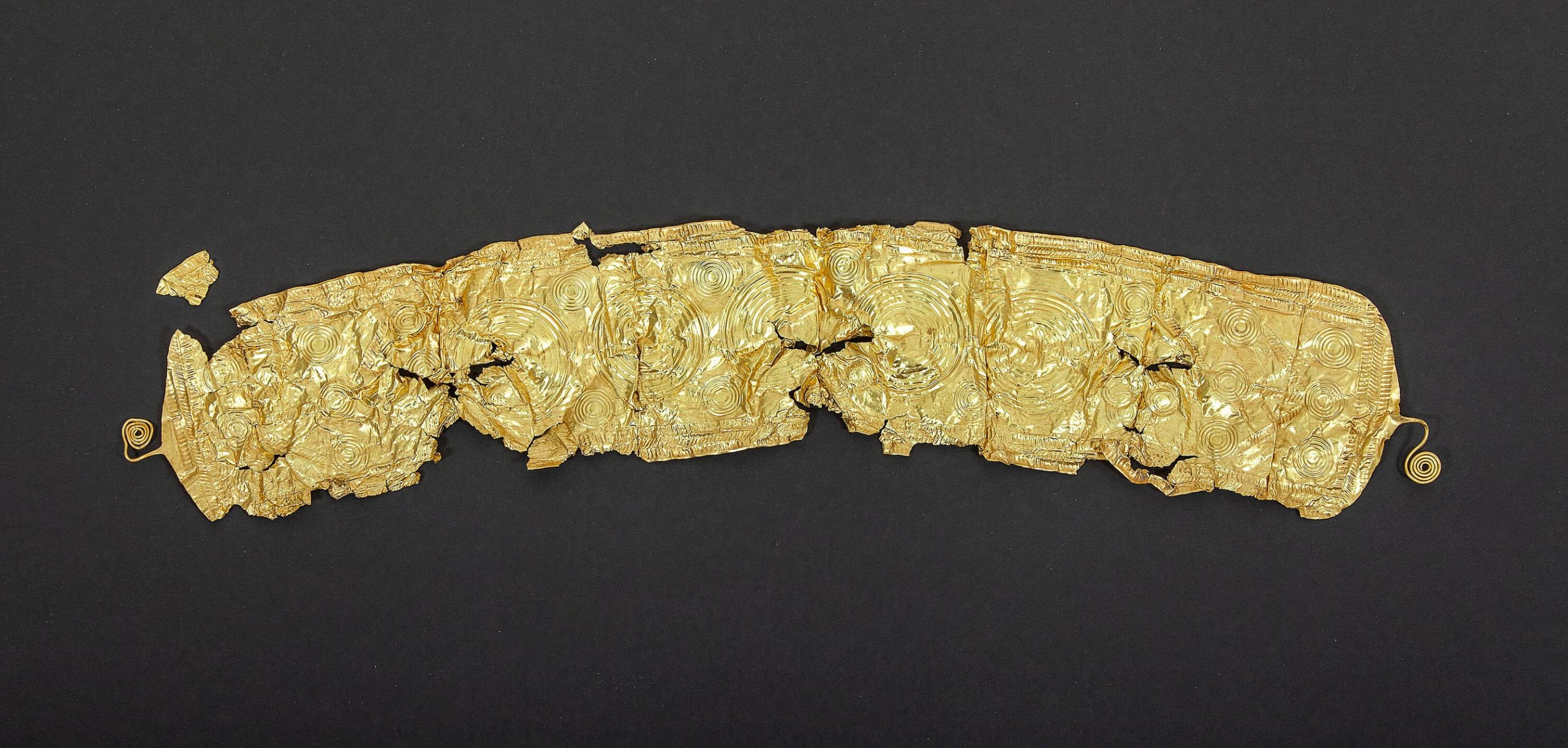The purpose of the rectangular badges with the image of the goddess is not certain, they could have decorated a belt or a diadem. They are made in high relief, female figures are shown wearing elaborated jewelry. Dated to the 6th century BCE they are attributed to the Etruscans.

Etruscan, Archaic period, c. 540/510 BC.
Badge with female figure.
Gold, Length 4.5 cm
Found at: Praeneste (Palestrina).
Rome, Museo Nazionale di Villa Giulia

Etruscan, Archaic period, c. 540/510 BC.
Female figure.
Gold, Length 5 cm
Found at: Cerveteri.
Rome, Museo Nazionale di Villa Giulia

Etruscan, 6th century BCE.
Length 4.5 cm
Plaque with female figure in high relief, wearing a chiton.
“The decoration is in filigree wire and granulation. Twisted wire forms her crown in a leaf pattern, her braids, her necklace, and the heavy hem of her chiton. Beads of granulation decorate her necklace and form the terminal curls of her hair.”


Etruscan, 6th century BCE
Italy: Lazio: Cerveteri: Caere
gold, silver, glass paste
Length: 3.80 cm, Width: 1.7 cm
“Oblong gold plaque, with a relief female figure attached by two double wires; she wears a long chiton, a crown, and a necklace with a bulla and two pendants in filigree, Her eyes, pendants and crown were inlaid with enamel, traces of which remain. The plaque has a raised ribbed border of gold-plated silver wire; a hole is pierced at each corner.”

The J. Paul Getty Museum, Villa Collection, Malibu, California, 83.AM.4


“An appliqué worked in repousse depicts a Kore, standing frontally with both arms along her sides and the left hand pulling her belted chiton to the side. Within the filigree wires of her diadem and necklace pendants are traces of blue glass paste. Glass paste inserts may also have filled her pupils, which are pierced. On each side of the head, twisted wires form a single braid, which falls over the breasts and terminates in a gold granule. The strips of gold that fastened the relief to a missing backer or frame are intact.
A series of kore appliqués, used to decorate clothing or most likely a belt, are known from several tombs at Cerveteri and possibly Praeneste. Several have perforations around the edge for stitching to cloth or leather.”
Gold applications of leather armor, a phalera and two rectangular plates from the tomb of Seuthes III, Golyama Kosmatka Mound (Funeral Complex) Shipka, Kazanlak municipality, Bulgaria.
Gold plaques with relief decoration:
“In the visual field is represented standing figure of a warrior or goddess Athena relied on long spear.”


http://alexandradelova.blogspot.com/2015/03/
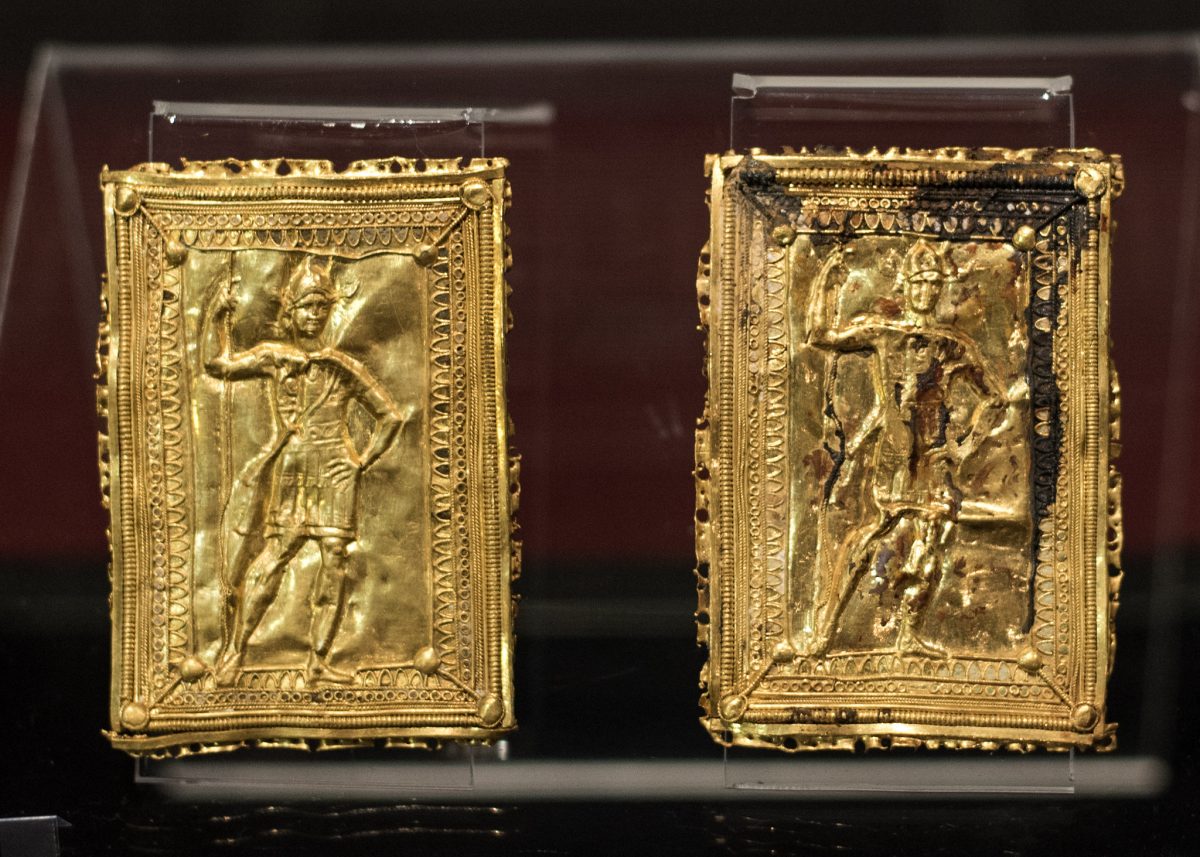
A pendant? from Cyprus, 750-600 BCE. An image of goddess with lions.
8.9 x 5.3 cm
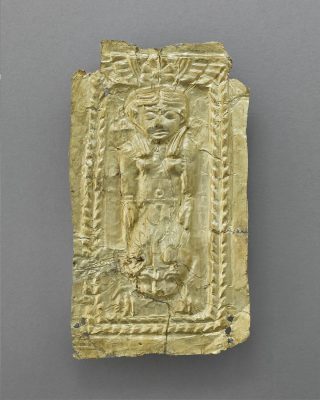
Musée du Louvre, Département des Antiquités orientales, AM 941 – https://collections.louvre.fr/ark:/53355/cl010134596


